On Air Now
X-Posure with John Kennedy 11pm - 2am
30 January 2024, 09:00
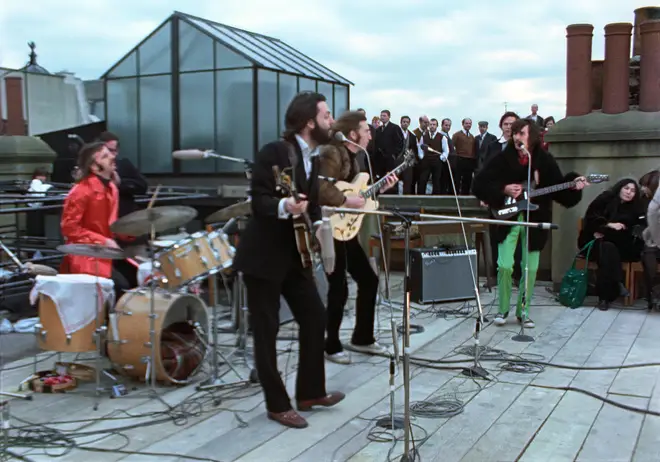
It’s one of the most iconic scenes in the story of The Beatles - but what made the Fab Four take to a London rooftop in the winter of 1969?
On 30th January 1969, The Beatles played their last ever gig. It wasn’t a paid show and a lot of people that witnessed the event weren’t even aware at the time that they were listening to The Beatles. They couldn’t see the four famous faces - John Lennon, Paul McCartney, George Harrison and Ringo Starr - and the songs they were hearing were unfamiliar and played very loudly and from a distance.

Coming to IMAX | The Beatles: Get Back - The Rooftop Concert
This was no ordinary concert - this was the moment that The Beatles took to the roof of their Apple offices in central London to perform their last public appearance as a group. The band would officially split just over a year later and the four men would never play together again.
It’s such an iconic moment in the Fab Four’s story - the band stop the traffic with rock ’n’ roll - that it’s been copied, parodied and referenced countless times in the last 50 years. The event forms the climax to Peter Jackson's documentary Get Back, which is available to watch on Disney+.
But why did the rooftop concert happen and which songs did The Beatles play?

The Beatles officially stopped touring in 1966. The quartet had worked constantly since Beatlemania broke in the summer of 1963 - they'd travelled the world, released seven albums, had 11 UK No 1 hit singles and made two feature films. They were exhausted. Controversial tours of the Philippines and the US in 1966 had seen the band come into actual physical danger and their sub-30 minute sets were full of old material and couldn’t be heard over the screaming fans anyway.
So, on 29 August 1966, The Beatles performed what they considered to be their last ever live show at San Francisco’s Candlestick Park. Even though the show wasn’t announced as their final date, it was the end of the era. With no further activity on the horizon, people though The Beatles had split up.
What the public didn’t know was that The Beatles had chosen to concentrate on their recording career. Their next album was to be an adventurous sonic adventure called Sgt Pepper’s Lonely Hearts Club Band, released in the summer of 1967. This LP was a huge success, selling millions and critical acclaim that was unusual for a pop album.
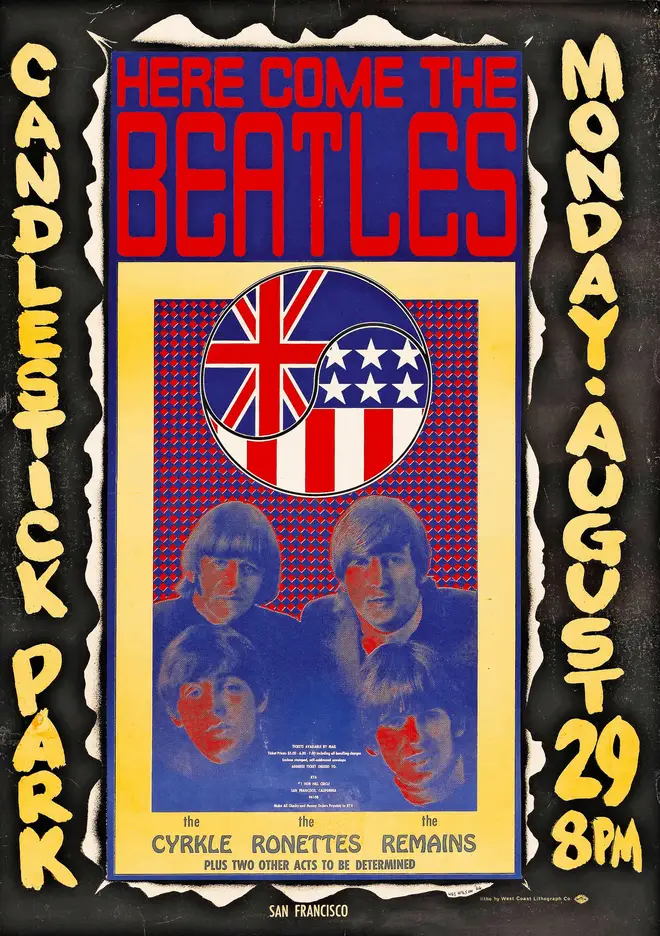
The Beatles worked on their Magical Mystery Tour film project for the rest of 1967 and spent most of 1968 recording the sprawling double “White Album”. During the making of this record, relations between the four became fractious (with Ringo walking off the sessions for two weeks), but the band enjoyed some of the ensemble playing on tracks like Yer Blues and Happiness Is A Warm Gun.
Because of this, towards the end of the album sessions in October 1968, The Beatles announced their return to live performance. They were to play three live shows at The Roundhouse in December. The gigs would be filmed for television and fans could win tickets via the official fan club. But these shows were postponed.
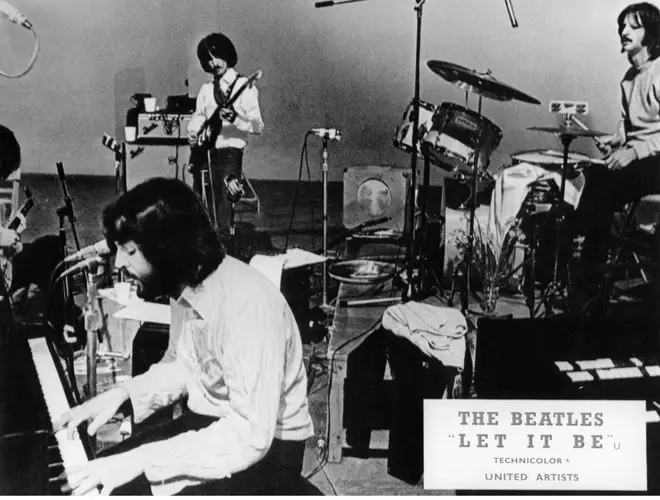
Originally, the gigs were to showcase the “White Album”, but the plan changed. The Beatles would rehearse a live show of new material, which would then be performed at a live, televised broadcast. You’d see The Beatles at work, “getting their act together”, then playing live to adoring fans who had waited the best part of three years to see their heroes again.
So it was that on 2 January 1969, the four Beatles went to Twickenham film studios in Middlesex to rehearse songs and build up a new set over two weeks. What could possibly go wrong?

The Beatles - Don't Let Me Down
The wheels fell off this idea quite quickly. Nobody could come to a decision on where the live show would take place or what the format would be. Would they play the show on an ocean liner to a group of invited fans? Would it take place in an African ampitheatre? Or would it take place in an art gallery in England? Or maybe just good old Twickenham studios?
Not only that, but the “White Album” had exhausted the group’s pool of material - while McCartney had a few songs on the boil, Lennon only had a couple of fragments. John dabbling with heroin didn’t help matters and the presence of his new partner Yoko Ono also caused further tension. George Harrison, meanwhile, had a stack of new songs, but had trouble getting his partners to listen.
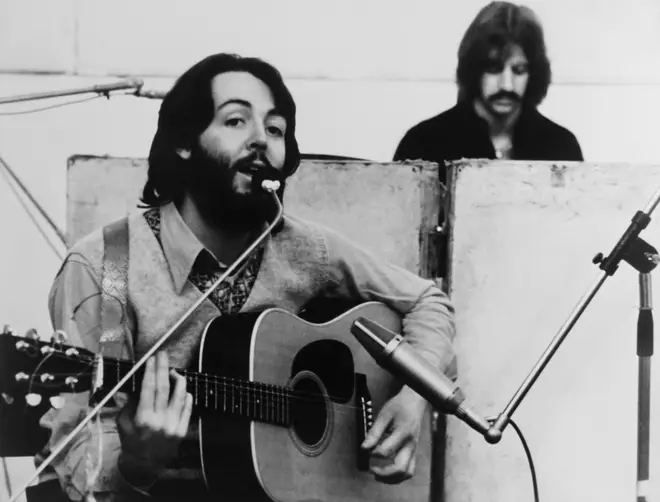
After only one week of rehearsal, George had had enough - he walked out of the group and only agreed to return if the live show idea was scrapped and the documentary was changed to be about the making of a new album. The sessions moved to Apple’s basement studio at their offices in Saville Row, London, but to continue the idea of The Beatles playing “live”, it was decided that the recordings would be done in simple takes, with no overdubs. To help with this, George enlisted keyboard player Billy Preston to accompany the band and help them “get back” to basics. This was also the title of a new McCartney song, developed during the sessions.
While the live show was dead in the water, the director of the documentary, Michael Lindsay-Hogg, was determined to have some kind of “climax” to the film. After much discussion, The Beatles came to the only decision that everyone could agree on. There was some consideration of them performing on top of Primrose Hill in North London, but ultimately, the band would move the least amount of distance they could manage. They’d play a live show on the roof of their office.
So it was that at lunchtime on Thursday, 30 January, The Beatles climbed their way onto the cold and windy rooftop of Number 3, Saville Row, accompanied by Billy Preston on organ.
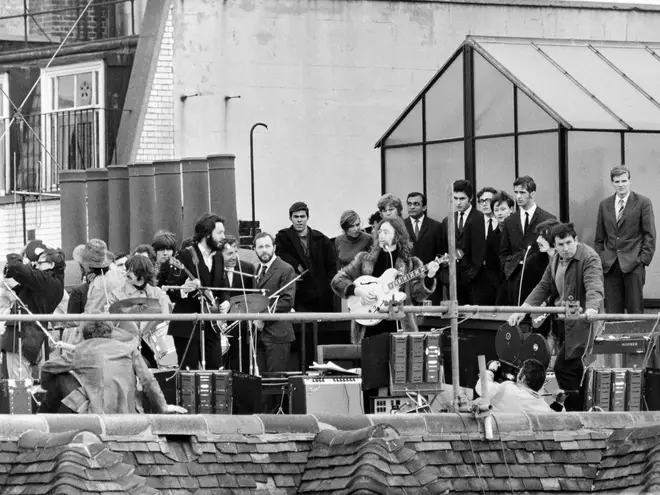
The Beatles played on the roof for just under 45 minutes, which engineer/producer Glyn Johns recorded the audio in the basement and Lindsay-Hogg’s cameramen caught the action. This is what The Beatles played:

The rooftop performance of “Get Back” from the forthcoming docuseries "TheBeatles: Get Back"
As the band tore through the final rendition of Get Back, complaints from local businesses about the noise - and, listening to some of the outtakes, it was LOUD - had prompted a couple of officers from the local Saville Row police station to arrive at Apple and remonstrate with staff. In 2021, one of the cops, 19-year-old PC Ray Dagg, told the Mirror that he was bluffing somewhat on the day - the musicians were on private property, meaning it would have been difficult to arrest them.
He said: "At 19, I was pretty gung-ho and I think I probably might have and taken the flak afterwards for wrongful arrest."
During the song the policemen make it up onto the roof. John and George’s amps are turned off by a nervous Mal Evans who's afraid of the legal consequences, but the two Beatles quickly switch the amps back on to finish the number in a brutal-if-ragged style. As McCartney eyes the approaching policemen, he ad-libs: “You’ve been playing on the roofs again.. you know your momma doesn’t like it… she’s gonna have you arrested!”
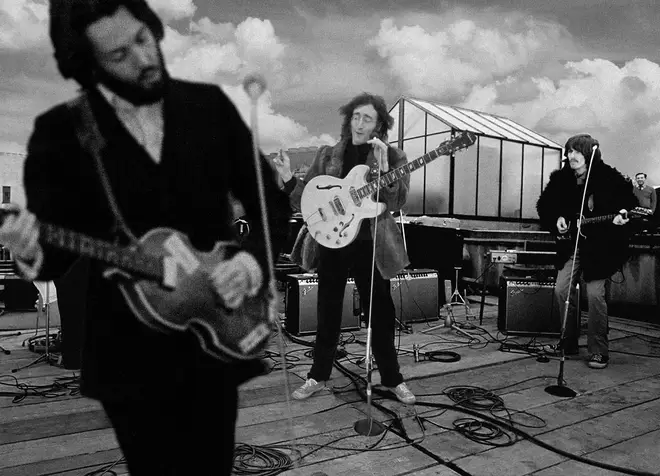
To The Beatles’ - and the film-makers- disappointment, nobody got arrested and the show finished. As the dying notes of Get Back faded away, Ringo’s wife Maureen - a Beatles fan from the early days - cheered in triumph at her heroes’ short-lived return to live music, causing Macca to return to the mike to say “Thanks Mo.” All that was left to say was John Lennon’s famous last words: “I’d just like to say thank you on behalf of the group and ourselves and I hope we’ve passed the audition.”

The Be-Sharps - Baby On Board
The rooftop show made the news that day, but it wasn’t until the release of the feature film documentary, now titled Let It Be, that the event passed into legend. It wasn’t the ending to the film that The Beatles had expected, but it left the movie with a memorable climax.
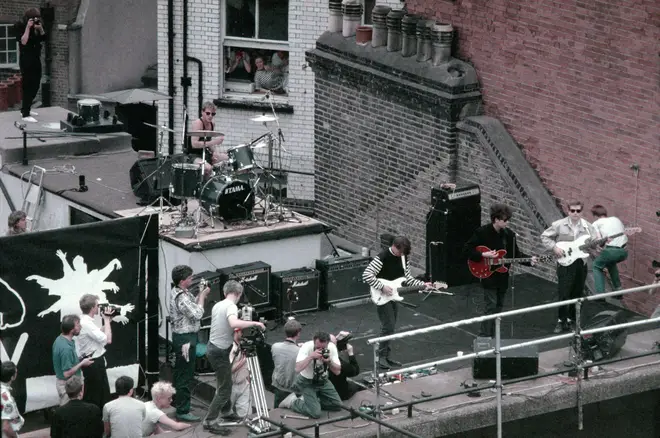
The rooftop show quickly became one of the most iconic images in the story of The Beatles. Monty Python star Eric Idle parodied the scene in his spoof documentary The Rutles (where one of the crew is unceremoniously booted off the roof and into the street below), while Homer Simpson’s barbershop quartet The Be-Sharps too to the roof of Moe’s Tavern for one last show (prompting a Simpsonised version of George Harrison to drive by and comment: “It’s been done.”)

U2 - Where The Streets Have No Name (Official Music Video)
U2 aped the rooftop show for the video to their 1987 single Where The Streets Have No Name and Manchester band James performed a show on top of the city’s Piccadilly Hotel on the anniversary of the Beatles’ gig in 1991.
Countless other groups have copied the event (including the Bootleg Beatles tribute band in 1999), and even Paul McCartney got in on his own act in July 2009, when he performed a show on top of the marquee of the Ed Sullivan theatre in New York. It’s been done, Macca!